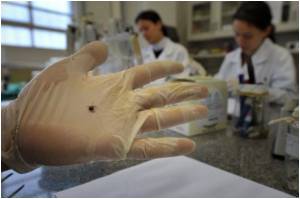Before infecting humans, tick-borne bacteria or viruses first have to get past a tick's defenses to colonize it. How this occurs is not well understood.

‘In ticks, the bacterium that causes the infection, triggers the expression of a protein that alters molecules in the tick's gut, allowing the bacteria to enter and colonize the gut microbes.’





To investigate, Yale researchers studied a model of the human
granulocytic anaplasmosis.The researchers found that in ticks, the bacterium that causes the infection, A. phagocytophilum, triggers the expression of a particular protein. This protein alters molecules in the tick's gut, allowing the bacteria to enter and colonize the gut microbes.
"It's like a stealth warrior that indirectly changes the tick by using the tick's own defense system," said Erol Fikrig, chief of the Infectious Diseases Section at Yale School of Medicine and senior author of the study.
The unexpected finding could help scientists develop strategies to block A. phagocytophilum and other tick-borne agents that cause disease, say the researchers. Fikrig's team will explore the phenomenon in the bacterium that causes Lyme disease, and its work could have implications for other mosquito-borne infections, such as Zika and West Nile.
The study was published by the Proceedings of the National Academy of Sciences.
Advertisement















